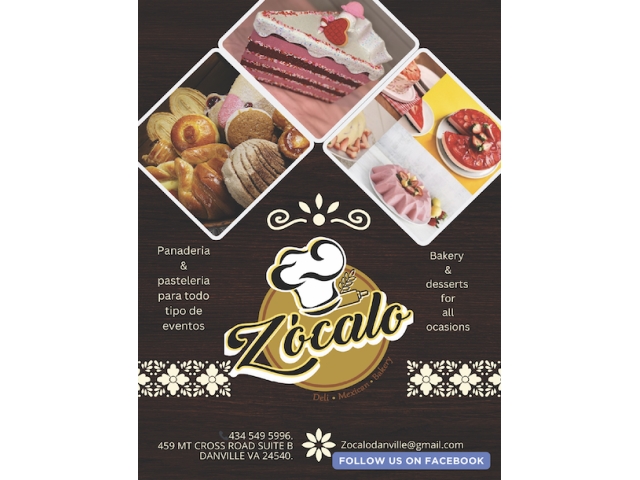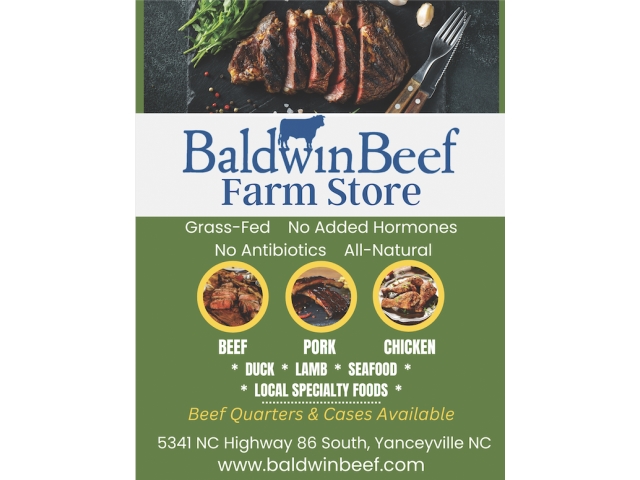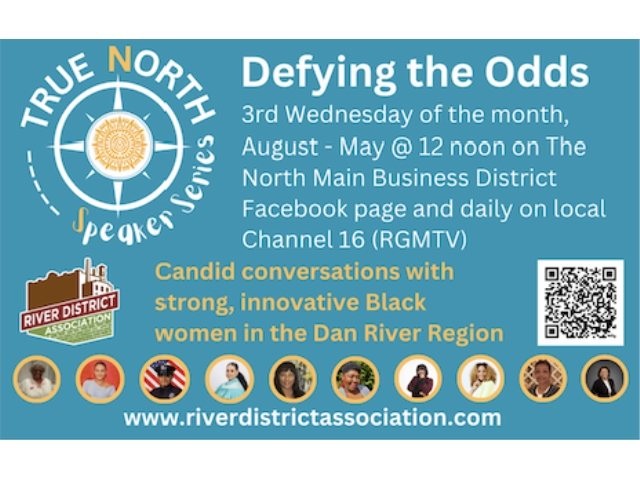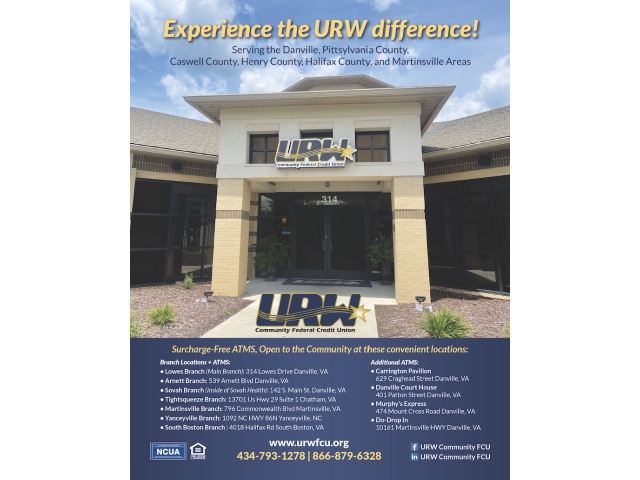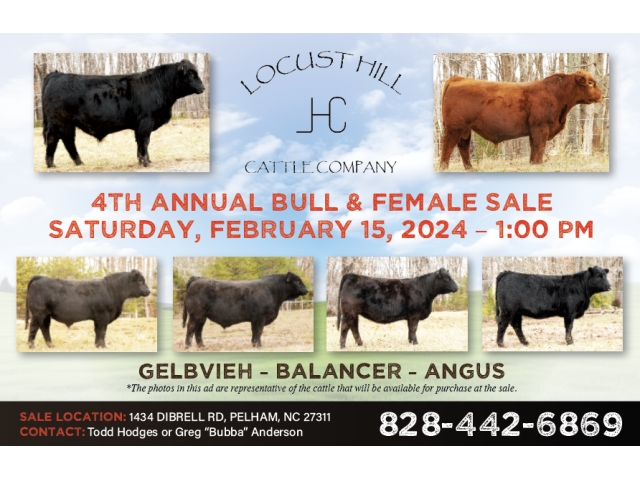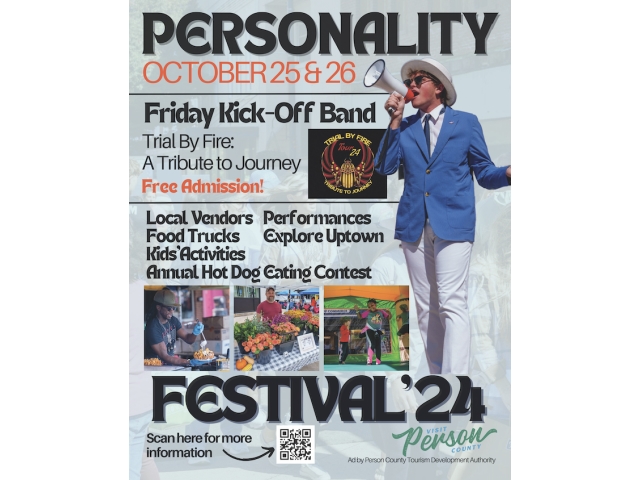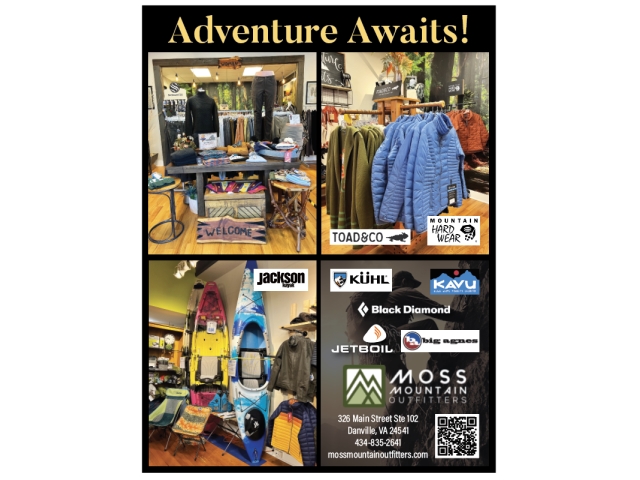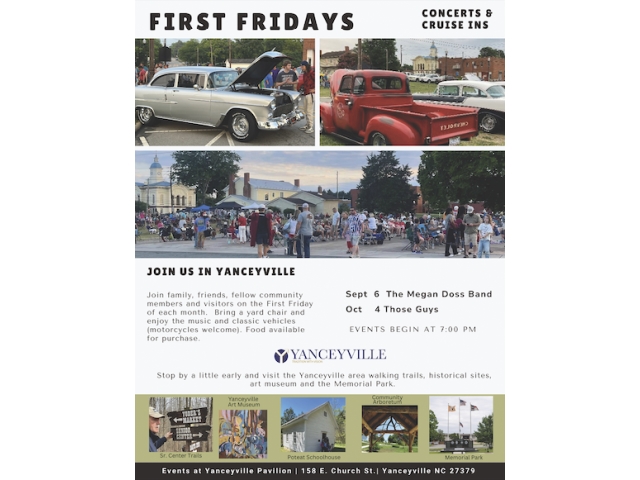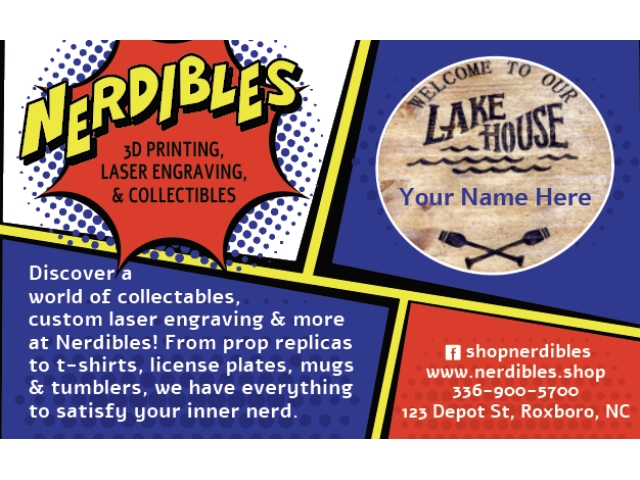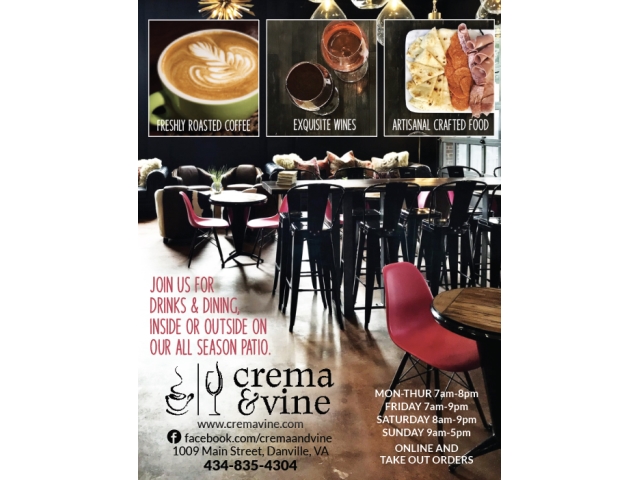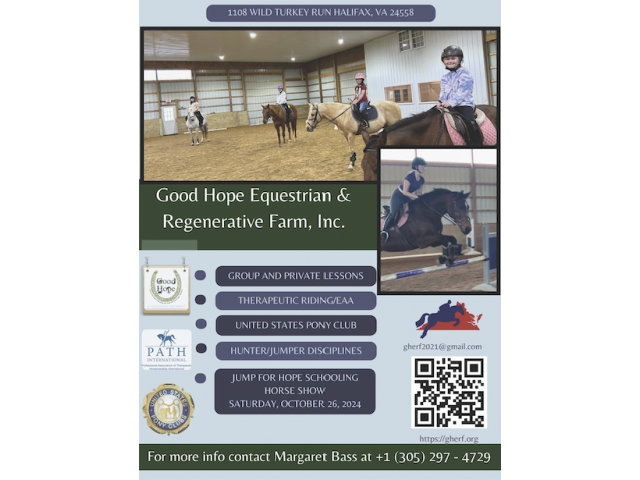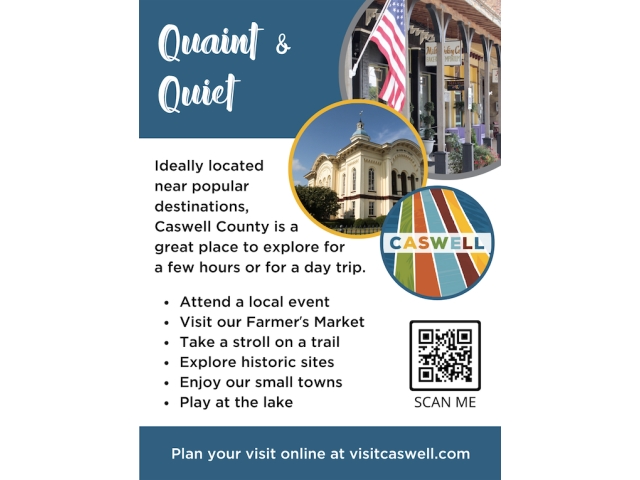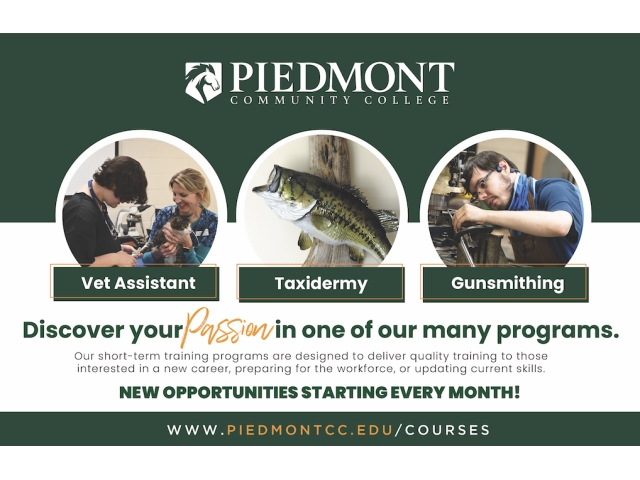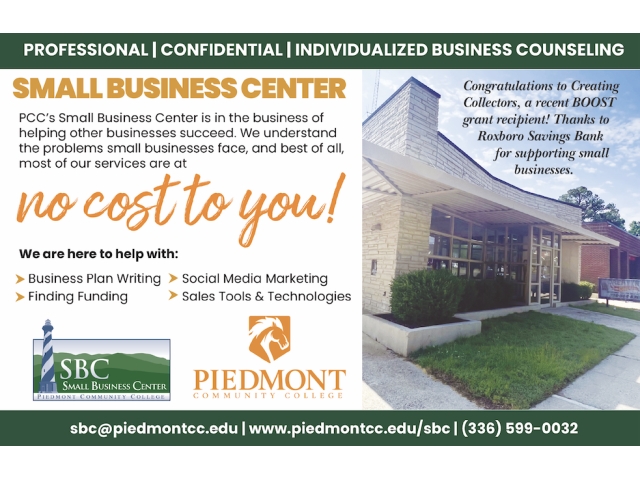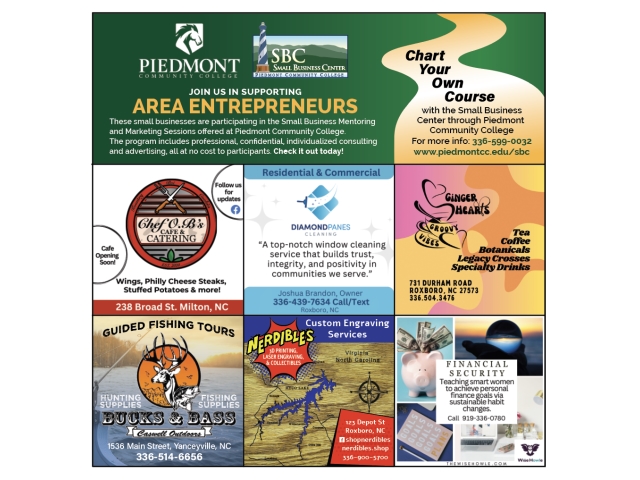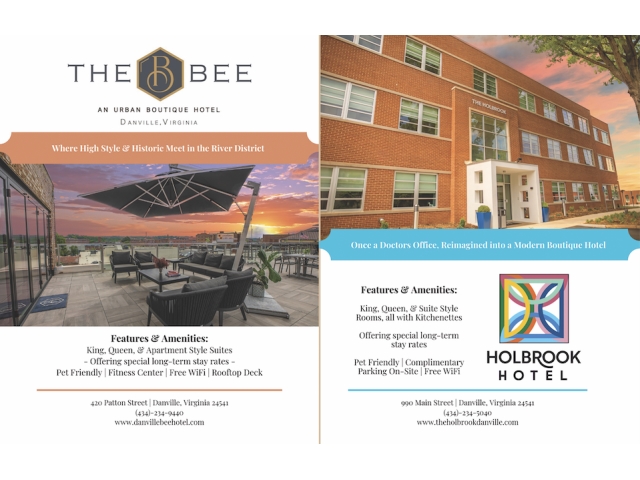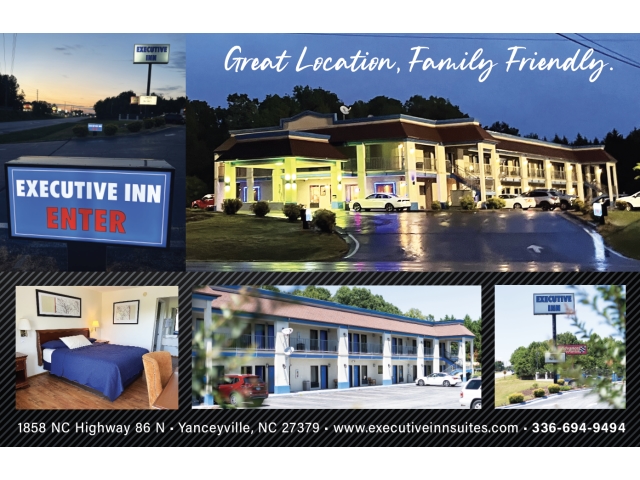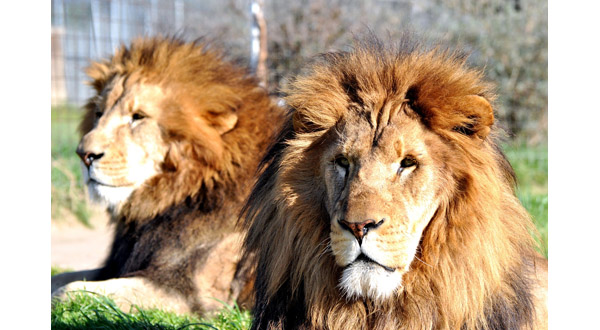
Thomas and Ra Lions by Jesse Anderson
published by Blank Page Solutions
Prior to Happy Endings Publications ownership
By Eva Miles
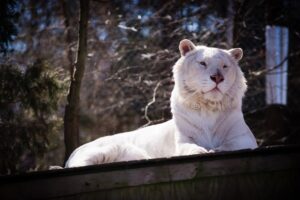 “Until one has loved an animal, a part of one’s soul remains unawakened,” asserted poet Anatole France. At the Conservators Center in Caswell County, North Carolina, visitors are confronted face-to-face with the beauty of the wild and can connect with animals in a unique way. The Center furthers and promotes wildlife conservation through education and raising awareness of rare and endangered species. A hidden gem of our state, the Conservators Center was founded in 1999 by Mindy Stinner and Douglas Evans. The founders live on-site and have dedicated their lives to the animals in their care. They opened their doors to the public in 2007 and have been a refreshing alternative to the normal zoo experience ever since.
“Until one has loved an animal, a part of one’s soul remains unawakened,” asserted poet Anatole France. At the Conservators Center in Caswell County, North Carolina, visitors are confronted face-to-face with the beauty of the wild and can connect with animals in a unique way. The Center furthers and promotes wildlife conservation through education and raising awareness of rare and endangered species. A hidden gem of our state, the Conservators Center was founded in 1999 by Mindy Stinner and Douglas Evans. The founders live on-site and have dedicated their lives to the animals in their care. They opened their doors to the public in 2007 and have been a refreshing alternative to the normal zoo experience ever since.
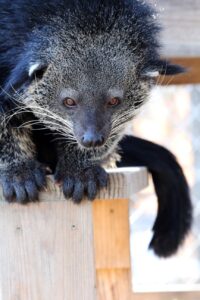 Their mission is simple – to reconnect people with wildlife. When you visit a typical zoo, animals are often far away from visitors with educational signs posted for individuals to learn more about each creature. Some species may be hiding out of sight or can only be seen at a distance. At the Conservators Center, you can stand merely five feet away from a lion, serval, or wolf. The guides have built strong relationships with the animals so that each animal wants to come out and say hello to visitors. Their tour guides educate and entertain you as you walk along the path. As you experience these amazing creatures, you hear interesting factoids and anecdotes, such as why a certain male lion is more popular with the lionesses (his darker mane, due to increased testosterone), or how the lions, who dislike water, saw the tigers playing in the water pool and scooped them out to save them. There are over eighty animals residing at the Center, totaling over twenty species of animals.
Their mission is simple – to reconnect people with wildlife. When you visit a typical zoo, animals are often far away from visitors with educational signs posted for individuals to learn more about each creature. Some species may be hiding out of sight or can only be seen at a distance. At the Conservators Center, you can stand merely five feet away from a lion, serval, or wolf. The guides have built strong relationships with the animals so that each animal wants to come out and say hello to visitors. Their tour guides educate and entertain you as you walk along the path. As you experience these amazing creatures, you hear interesting factoids and anecdotes, such as why a certain male lion is more popular with the lionesses (his darker mane, due to increased testosterone), or how the lions, who dislike water, saw the tigers playing in the water pool and scooped them out to save them. There are over eighty animals residing at the Center, totaling over twenty species of animals. 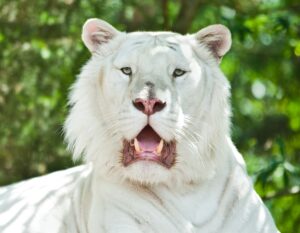 The unique caracals with their tufted ears, the playful ring-tailed lemurs, the striking white tiger, and the gray wolves, which readily approach visitors, are just some of the remarkable animals you can encounter on a tour. Perhaps the most breathtaking of all is their impressive collection of lions. Observing these great beasts up close and personal is a treat, but that is merely the beginning. When the tour guide lets out a call, the sixteen lions respond back together. The moment you are surrounded by the roar of sixteen lions, you realize you are experiencing a natural beauty unlike any other. Some feel their mouths drop open or their hair standing on end, while others are brought to tears by the symphony of these majestic beasts.
The unique caracals with their tufted ears, the playful ring-tailed lemurs, the striking white tiger, and the gray wolves, which readily approach visitors, are just some of the remarkable animals you can encounter on a tour. Perhaps the most breathtaking of all is their impressive collection of lions. Observing these great beasts up close and personal is a treat, but that is merely the beginning. When the tour guide lets out a call, the sixteen lions respond back together. The moment you are surrounded by the roar of sixteen lions, you realize you are experiencing a natural beauty unlike any other. Some feel their mouths drop open or their hair standing on end, while others are brought to tears by the symphony of these majestic beasts.
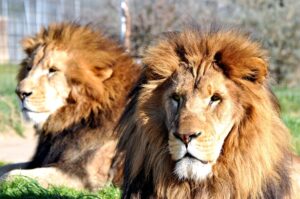 While visitors are in close proximity to the animals, they are kept safe with proper fencing and a tour barrier. The Center has never had an attack or escape, as safety is paramount. Licensed and inspected by the USDA, the Center follows strict regulations on enclosure sizes, proper diet, and medical treatment for each animal. The enclosures are not fancy, for the people at the Center feel aesthetics are for the visitors. Instead, the Center feels those funds are best spent on keeping the animals happy and healthy. The founders are not increasing the size of their facility but are focused on making it better. From ensuring each animal’s enclosure is the best it can be, to providing more enrichment, their primary focus is to improve the lives of the animals in their care. Emily Jaffe, the Business Relations Supervisor at the Center, states they, “all have the animals’ best interests in mind.”
While visitors are in close proximity to the animals, they are kept safe with proper fencing and a tour barrier. The Center has never had an attack or escape, as safety is paramount. Licensed and inspected by the USDA, the Center follows strict regulations on enclosure sizes, proper diet, and medical treatment for each animal. The enclosures are not fancy, for the people at the Center feel aesthetics are for the visitors. Instead, the Center feels those funds are best spent on keeping the animals happy and healthy. The founders are not increasing the size of their facility but are focused on making it better. From ensuring each animal’s enclosure is the best it can be, to providing more enrichment, their primary focus is to improve the lives of the animals in their care. Emily Jaffe, the Business Relations Supervisor at the Center, states they, “all have the animals’ best interests in mind.” 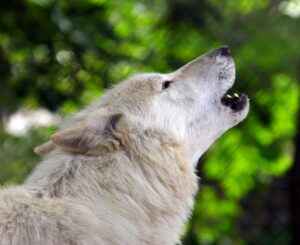 The animals are kept in enclosures with items they want or need, such as hammocks, platforms, den boxes, toys, and heated water in the winter. While their space may not look the same as it would in the wild, the animals have everything they need and are very content in their homes. For the Center, the welfare of each animal comes first and the visitor experience comes second, as they choose to spend their money on what the animal needs. The love they have for their animals is evidenced on their website. Each animal there has its own page, describing its history, likes and dislikes, and personality traits. Arthur, the white tiger, even has a Facebook page with hundreds of followers around the world. The respect they offer each animal does not end in life, but is demonstrated by the care they show for each animal after it passes. Their obituaries are kept online, a personal memorial of respect, each carefully and lovingly written. Paw prints are taken of the animals and they are respectfully cremated after helping veterinary students learn more about their bodies during a necropsy. This process not only educates students but assists in various studies and the collection of DNA. Co-founder Mindy Stinner is a huge fan of bringing science forward and believes that “anything that benefits the science on these animals is going to eventually benefit these animals both in captivity and in the wild.” They truly love and honor each creature as an individual from the day it joins the Center until it leaves.
The animals are kept in enclosures with items they want or need, such as hammocks, platforms, den boxes, toys, and heated water in the winter. While their space may not look the same as it would in the wild, the animals have everything they need and are very content in their homes. For the Center, the welfare of each animal comes first and the visitor experience comes second, as they choose to spend their money on what the animal needs. The love they have for their animals is evidenced on their website. Each animal there has its own page, describing its history, likes and dislikes, and personality traits. Arthur, the white tiger, even has a Facebook page with hundreds of followers around the world. The respect they offer each animal does not end in life, but is demonstrated by the care they show for each animal after it passes. Their obituaries are kept online, a personal memorial of respect, each carefully and lovingly written. Paw prints are taken of the animals and they are respectfully cremated after helping veterinary students learn more about their bodies during a necropsy. This process not only educates students but assists in various studies and the collection of DNA. Co-founder Mindy Stinner is a huge fan of bringing science forward and believes that “anything that benefits the science on these animals is going to eventually benefit these animals both in captivity and in the wild.” They truly love and honor each creature as an individual from the day it joins the Center until it leaves.
 Unlike a trip to a zoo, the Conservators Center is a walking tour based experience. Visitors leave glowing reviews and have described the Center as a “fabulous place”, “one of my favorite places in all of North Carolina” and a “fantastic facility.” You walk on an unpaved gravel path for three quarters of a mile, or you may pay to be driven on a golf cart if you have mobility issues. You are welcome to take pictures of these photogenic animals as you walk with your guide. Visitors need to reserve a tour slot before they go, and there are a plethora of tour options to choose from. The Whiskers and Tails tour is geared for young children, with a forty-five minute guided tour for shorter attention spans, while the Family Adventure tour is perfect for families with more time to spend. The popular Treats and Toys tour showcases the unique behaviors of the animals, using meat or enticing scents as a reward. Ramsey, the heavyset leopard, has been taught to touch his nose to the ball on the end of a training stick. When he touches the ball, Ramsey is rewarded with a piece of meat. The treats he receives are part of the measured diet he is on to help him slim down to a healthier weight. He will jump onto platforms and stand up high for the tour guides, much to the delight of onlookers. Another tour, the Family Twilight Tour, gives visitors a chance to observe the nocturnal species, while also seeing the lions and wolves at their most active time of day.
Unlike a trip to a zoo, the Conservators Center is a walking tour based experience. Visitors leave glowing reviews and have described the Center as a “fabulous place”, “one of my favorite places in all of North Carolina” and a “fantastic facility.” You walk on an unpaved gravel path for three quarters of a mile, or you may pay to be driven on a golf cart if you have mobility issues. You are welcome to take pictures of these photogenic animals as you walk with your guide. Visitors need to reserve a tour slot before they go, and there are a plethora of tour options to choose from. The Whiskers and Tails tour is geared for young children, with a forty-five minute guided tour for shorter attention spans, while the Family Adventure tour is perfect for families with more time to spend. The popular Treats and Toys tour showcases the unique behaviors of the animals, using meat or enticing scents as a reward. Ramsey, the heavyset leopard, has been taught to touch his nose to the ball on the end of a training stick. When he touches the ball, Ramsey is rewarded with a piece of meat. The treats he receives are part of the measured diet he is on to help him slim down to a healthier weight. He will jump onto platforms and stand up high for the tour guides, much to the delight of onlookers. Another tour, the Family Twilight Tour, gives visitors a chance to observe the nocturnal species, while also seeing the lions and wolves at their most active time of day. 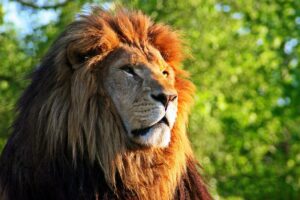 All of these tours are also available for adult groups without children to enjoy. During certain months of the year, the Center is alive with seasonal excitement. The Howl-O-Ween Tour, offered in October, is one where staff and visitors dress up in costume and enjoy a twilight showcase of the creatures. The Winter in the Wild Tour, offered in November and December, enables visitors to witness the thick winter coats atop energized animals, who are invigorated by the fallen temperatures. In addition to these tours, there are premium experience tours that are offered. For photography enthusiasts or animal lovers, the Photo Safari tour enables the photographer to place their camera lens directly against the enclosure, with the assistance of a staff member, to capture the perfect shot without a fence obstructing them. There are a number of other tours to choose from, as well as the ability to create your own tour experience. During the week, school or homeschool groups often visit the Center for educational field trips at a discounted rate. For a unique birthday experience, children can have their party at the Center with a special tour, a stuffed animal for the birthday boy or girl, and a covered shelter for their party. For camping enthusiasts, campers can pitch their tents on the Center’s grounds. You have access to bathrooms and a fire pit and attend a nocturnal and a morning tour. Where else can you safely fall asleep listening to the wild calls of jungle cats, wolves, and lions as they get ready for bed?
All of these tours are also available for adult groups without children to enjoy. During certain months of the year, the Center is alive with seasonal excitement. The Howl-O-Ween Tour, offered in October, is one where staff and visitors dress up in costume and enjoy a twilight showcase of the creatures. The Winter in the Wild Tour, offered in November and December, enables visitors to witness the thick winter coats atop energized animals, who are invigorated by the fallen temperatures. In addition to these tours, there are premium experience tours that are offered. For photography enthusiasts or animal lovers, the Photo Safari tour enables the photographer to place their camera lens directly against the enclosure, with the assistance of a staff member, to capture the perfect shot without a fence obstructing them. There are a number of other tours to choose from, as well as the ability to create your own tour experience. During the week, school or homeschool groups often visit the Center for educational field trips at a discounted rate. For a unique birthday experience, children can have their party at the Center with a special tour, a stuffed animal for the birthday boy or girl, and a covered shelter for their party. For camping enthusiasts, campers can pitch their tents on the Center’s grounds. You have access to bathrooms and a fire pit and attend a nocturnal and a morning tour. Where else can you safely fall asleep listening to the wild calls of jungle cats, wolves, and lions as they get ready for bed?
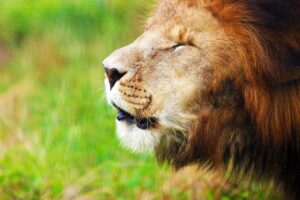 The Center is a nonprofit organization, funded entirely through donations, tours, memberships, and sales at their gift shop. Lifetime Adopters play a crucial role in the organization’s success, as they form a unique bond with their animals while helping the Center financially thrive. Visitors who feel a special connection to a species are encouraged to develop a relationship with a specific animal through their Lifetime Adoption program. Adopters give a monthly donation to the Center and in turn get free educational tours, discounts on specialty tours, their name featured on the animal’s enclosure, and can even schedule times to visit their adopted animal. Many adopters feel a deep connection with their animal of choice and, after a number of visits, some animals will even recognize their adopter’s vehicle as it enters the Center. Mindy Stinner states the wolves, “will start howling as soon as they pass the building…they know.”
The Center is a nonprofit organization, funded entirely through donations, tours, memberships, and sales at their gift shop. Lifetime Adopters play a crucial role in the organization’s success, as they form a unique bond with their animals while helping the Center financially thrive. Visitors who feel a special connection to a species are encouraged to develop a relationship with a specific animal through their Lifetime Adoption program. Adopters give a monthly donation to the Center and in turn get free educational tours, discounts on specialty tours, their name featured on the animal’s enclosure, and can even schedule times to visit their adopted animal. Many adopters feel a deep connection with their animal of choice and, after a number of visits, some animals will even recognize their adopter’s vehicle as it enters the Center. Mindy Stinner states the wolves, “will start howling as soon as they pass the building…they know.” 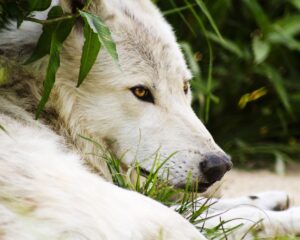 The leopards will climb to the top of their tower when they hear a certain car, in order to see their adoptive parents who have donated their time and money to house these beautiful cats. Witnessing the bonds formed between the adopters and their animals is something the Center loves to see, for the animals thrive with these relationships. “They live in one place; we have to bring the world to them. That’s our responsibility,” states Ms. Stinner. For those who do not want the annual financial commitment of adoption, individual and group memberships are available for people who wish to visit the Center multiple times throughout the year. Their large Visitor’s Center has a gift shop with stuffed animals, art work, books, jewelry and more. In addition, they have a partnership with the Iron Gate Winery in Mebane, North Carolina. Beautiful bottles of wine, with an image of a Conservators Center animal on each label, are sold to wine and animal enthusiasts alike. A percentage of the profits from each sale directly helps the Center and its creatures. Donations of various kinds assist the Center with feeding and caring for the animals. Hunters donate deer, big box stores donate various meats, people donate their time, and monetary gifts are always appreciated.
The leopards will climb to the top of their tower when they hear a certain car, in order to see their adoptive parents who have donated their time and money to house these beautiful cats. Witnessing the bonds formed between the adopters and their animals is something the Center loves to see, for the animals thrive with these relationships. “They live in one place; we have to bring the world to them. That’s our responsibility,” states Ms. Stinner. For those who do not want the annual financial commitment of adoption, individual and group memberships are available for people who wish to visit the Center multiple times throughout the year. Their large Visitor’s Center has a gift shop with stuffed animals, art work, books, jewelry and more. In addition, they have a partnership with the Iron Gate Winery in Mebane, North Carolina. Beautiful bottles of wine, with an image of a Conservators Center animal on each label, are sold to wine and animal enthusiasts alike. A percentage of the profits from each sale directly helps the Center and its creatures. Donations of various kinds assist the Center with feeding and caring for the animals. Hunters donate deer, big box stores donate various meats, people donate their time, and monetary gifts are always appreciated. 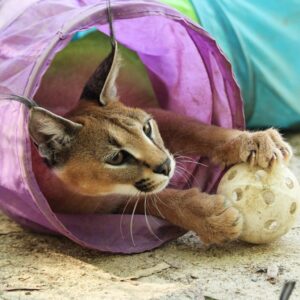 The cost to house and provide veterinary care to the animals is large, with a typical simple lion enclosure costing fifty thousand dollars. It costs the Center approximately seven hundred thousand dollars each year to run the facility, which is funded completely by the community and the generosity of many. In addition, there is a supply list on their website of needed items, such as paper towels or specific brands of dog or cat food. There are many volunteer opportunities for interested individuals, but they ensure that everyone who works there is educated on their policies and dedicated to their cause. In order to volunteer at the Center, an individual must be 18 years of age. There are many areas in which a person can help out, from animal care and the construction of enclosures, to helping out in the Visitor’s Center. Everyone who has dedicated their time and energy to these creatures believes wholeheartedly in the Center’s mission. Ms. Jaffe states she started working at the Center for the animals, but “stuck around for the people…they are all working towards the same goal.”
The cost to house and provide veterinary care to the animals is large, with a typical simple lion enclosure costing fifty thousand dollars. It costs the Center approximately seven hundred thousand dollars each year to run the facility, which is funded completely by the community and the generosity of many. In addition, there is a supply list on their website of needed items, such as paper towels or specific brands of dog or cat food. There are many volunteer opportunities for interested individuals, but they ensure that everyone who works there is educated on their policies and dedicated to their cause. In order to volunteer at the Center, an individual must be 18 years of age. There are many areas in which a person can help out, from animal care and the construction of enclosures, to helping out in the Visitor’s Center. Everyone who has dedicated their time and energy to these creatures believes wholeheartedly in the Center’s mission. Ms. Jaffe states she started working at the Center for the animals, but “stuck around for the people…they are all working towards the same goal.”
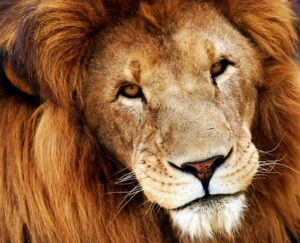 You cannot truly appreciate the beauty and intelligence of wild animals until they are right in front of you, meeting your gaze. The connection you feel when you are at the Conservators Center is difficult to describe, as it is unlike any zoo experience you will encounter. Entering the space of these beautiful creatures will enlighten and change you. When you drive away, the calls of the big cats and wolves fading into the distance, you will feel a part of you awakened. And you will await your return.
You cannot truly appreciate the beauty and intelligence of wild animals until they are right in front of you, meeting your gaze. The connection you feel when you are at the Conservators Center is difficult to describe, as it is unlike any zoo experience you will encounter. Entering the space of these beautiful creatures will enlighten and change you. When you drive away, the calls of the big cats and wolves fading into the distance, you will feel a part of you awakened. And you will await your return.
The Conservators Center is a 501(c)(3) nonprofit organization located at 676 E. Hughes Mill Road, Burlington, NC. More information about the Center and its tours can be found at https://www.conservatorscenter.org ![]()
![]()








